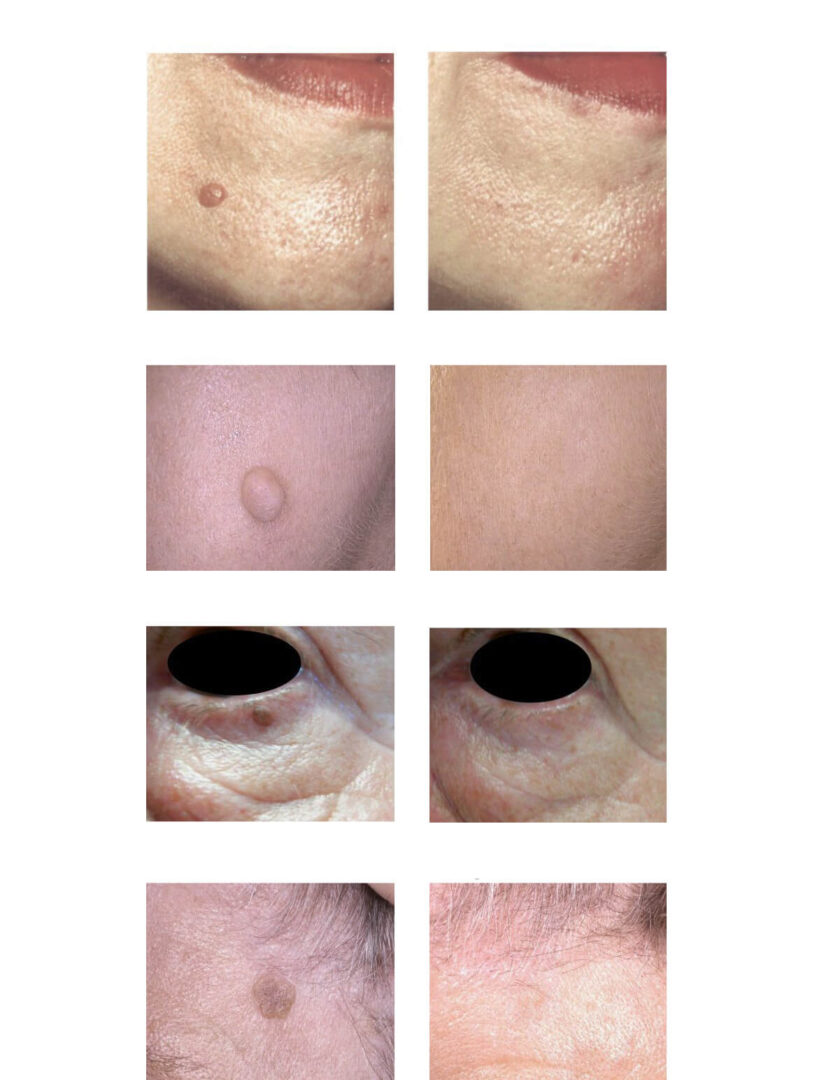Laser mole removal
Moles are pigmented formations of the skin, that causes unwanted problems or traumas in constantly irritated areas. Most of these lesions are benign and their removal doesn’t cause problems. The good news is, that thanks to one of the most powerful lasers in the world – “Lumenis AcuPulse” and unique “SuperPulse” technology, removing moles is a completely simple and fast procedure! “Sapiegos Clinic” is the only private clinic in Lithuania that performs the removal of nevi with the “Lumenis AcuPulse: CO2 laser, which is appraised by a dermatological professionals as dermatological “Ferrari”.


About the procedure
The dermatological CO2 laser remains the gold standard for the removal of skin lesions, replacing the need for a scalpel. This laser is not only suitable for the removal of moles, warts, papilloma’s, keratoses and other benign skin growths, but also for the treatment of skin defects and scars corrections.
The CO2 laser takes its name from the carbon dioxide gas that fills the laser’s optical medium. The laser emits an invisible beam of 10,600 nm which is best absorbed by water. Since 70-90% of our cells and intercellular fluid is made up of water, this laser heats tissues to a temperature of 100 ℃, thus evaporating the water out of the affected skin structures and can safely and gradually remove the lesion. In addition, this device has a bleeding-stopping effect, which makes the procedure shorter and safer, and ensures faster healing process.
Laser removal of acne has shown astonishing results, with approximately 95% of cases leaving no marks or scars and only the 5% leave slight skin changes. Laser removal of birthmarks takes a very short time, often even without the need for painkillers. This innovative laser, in comparison to traditional methods of mole removal – is a huge leap forward, which doesn’t require stitches to fix the wound, excludes often re-bandaging, and offers shorter recovery time.
Laser nevus removal at “Sapiegos Clinic” avoids all these problems by using only a patch and antibacterial ointment.
To achieve the highest standards, “Sapiegos Clinic” uses several laser technologies for effective results. Another technology is the German “Erbium:Yag Asclepion MCL1 Dermablate” laser, which has an ablative principle.
Am I a suitable candidate?
If you notice moles on your skin that bother you for aesthetic reasons or are in functionally irritated areas of the body (e.g., elbow bends, the groin, belt area), then you are a good candidate for this procedure. The laser is best suited for the removal of benign, clear-edged, raised above the surface of the skin and skin-coloured hairless moles. However, before the removal, moles should always be evaluated by a dermato-venereologists, ensuring that the lesion is not malignant.
It is important to remember that there might be a partial or total mole recurrence in the same spots, and in this case an additional laser treatment after a fixed period of time is necessary. If you have any questions or doubts, doctors dermatovenereologists specialized in oncology working at Sapiegos Clinic are always ready to professionally advise, examine and recommend the best treatment for your case.


Why choose?
- Effective treatments with the “Lumenis AcuPulse” CO2 laser, one of the most powerful and fastest CO2 lasers in the world.
- The treatments are carried out by professional doctors specialising in dermato-oncology.
- A quick and painless procedure. Minimal thermal intervention. Easy healing period.
- No more traumatising moles in the wrong place, thus putting them at risk of degeneration.
- Excellent aesthetic results.
-
Before the procedure
-
During the procedure
-
After the procedure
Prices
Removal of moles and keratoses of up to 3 mm Ø in the face or head area
59 €
Removal of mole, keratosis from 3 mm Ø in the face or head area
79 €
Removal of moles and keratoses of up to 3 mm Ø on the body area
49 €
Removal of mole, keratosis from 3 mm Ø in the body area
59 €
Laser removal of a mole or other growth > 1 cm
109 €
Removal of xanthelasma, dyskeratoses
79-99 €
Laser removal of multiple derivatives up to 10 units
299 €
Removal of multiple derivatives of 10 pcs. up to 20 pcs.
349 €
Brief consultation, examination, local anaesthesia, post-procedural care and examination by a dermatovenereologist for removal of lesions
49 €